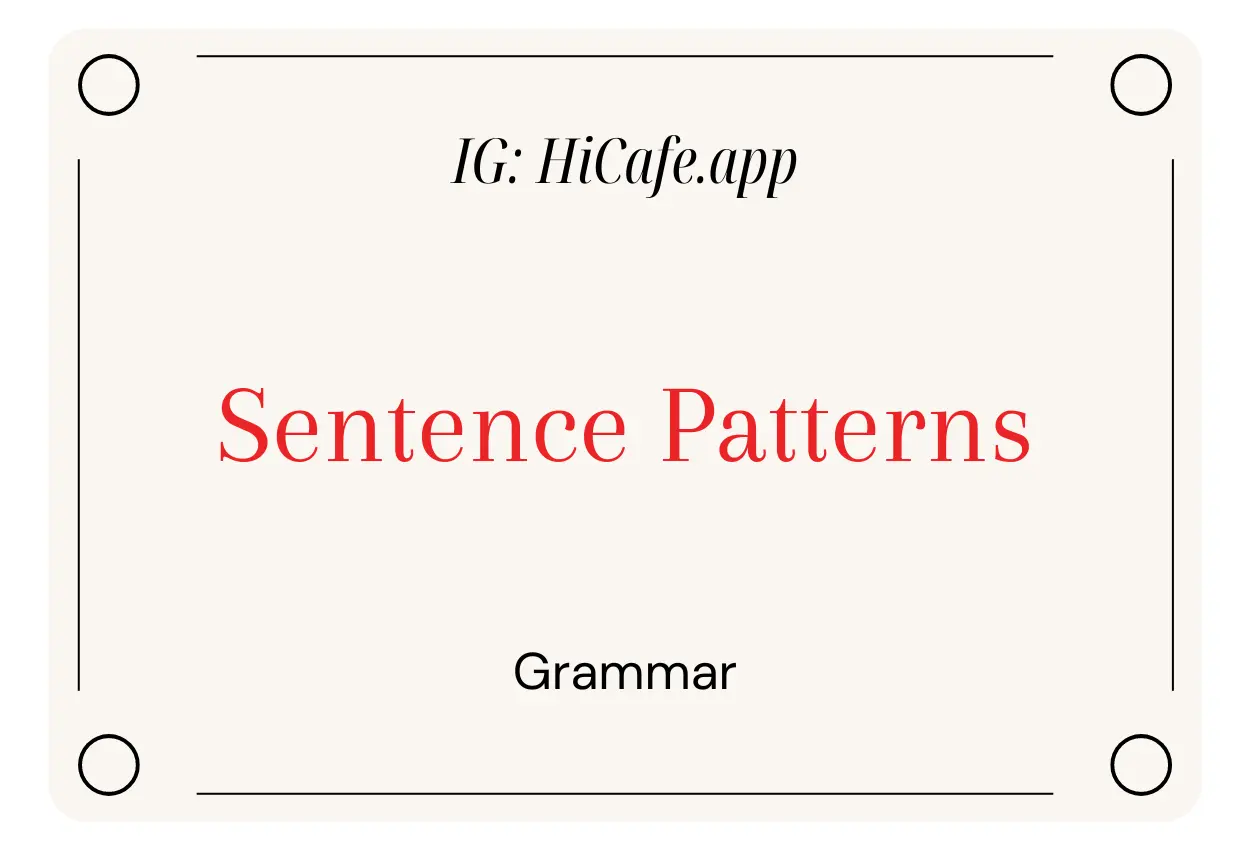Grammar Level 6- Lesson 26- Sentence Patterns in English
In this grammar lesson, you learn about Sentence Patterns in English and how to use them in your English conversation and writing. Just follow sentence pattern examples and write them down a few times to learn them very well. After finishing this lesson, you should work on its quiz.
Grammar Recap
In our previous lesson, we covered the Punctuation in English If you just landed on this page, we suggest that you complete our previous lesson including its quizzes before continuing on this lesson.
Requirement Lessons
There is no required lessons for working and learning this lesson.
Sentence Pattern Examples
Sentence patterns are the phrases and clauses that make up the structure of a sentence. The way you use these patterns adds variety to your communication.
Phrases are groups of words connected that do not make a complete sentence because they lack a subject and/or verb. Clauses are a group of words that contain a verb and other sentence components. Depending on the type of clause, it may make a complete sentence and it may not.
Knowing your sentence patterns makes sure that all of the words you put in your sentences are in the right order. Here’s another little tip: if you know your sentence patterns, you will be able to figure out the kinds of words you’re using as well. More on that later.
Take your time going through this lesson, even if you feel like you already know most of it. For extra practice, label sentences in a book you’re reading, or on a piece of your English homework. The more you practice this lesson, the more naturally you will find yourself thinking in English!
There are four basic patterns that are used when putting together a sentence:
Subject + Verb (S + V)
Subject + Verb + Direct Object (S + V + DO)
Subject + Verb + Indirect Object + Direct Object (S + V + IO + DO)
Subject + Verb + Subject Complement (S + V + SC)
A subject is usually a noun or a pronoun, but it may also be a gerund, an infinitive, a clause, or a phrase.
The verbs in these patterns are action verbs or linking verbs.
It’s important to consider that subjects or verbs are sometimes compound. That means there is more than one word serving as a subject or a verb in a sentence or question.
S + V
They live in Arizona.
subject: they
verb: live
S + V + DO
My brother bought a house.
subject: brother
verb: bought
direct object: house
S + V + IO + DO
She gave her friend some advice.
subject: she
verb: gave
direct object: advice
indirect object: friend
two young women talking
S + V + SC
The shoes are black.
subject: shoes
verb: are
subject complement: black
It’s useful to identify prepositional phrases before you decide which word is the subject, the verb, the direct object, etc. Many teachers tell students to draw parentheses around the prepositional phrases–if they exist–before determining the pattern of the sentence.
For example:
Tom works (at a shoe store) (in the mall).
(In the middle) (of the room) there is a table.
Most (of the students) like the class.
In the first sentence, the subject is “Tom” and the verb is “works.”
In the second sentence, the subject is “there,” the verb is “is” and the subject complement is “table.”
In the third sentence, the subject is “most,” the verb is “like” and the word “class” is the direct object.
It’s easier to identify these parts of the sentence if you find the prepositional phrases first.
The sentences that you learn about on this page are basic sentence patterns. There are many, many different ways to form a sentence; however, you should learn these four basic patterns first.
Quiz for Sentence Patterns
Now that you learned your new lesson, it is time to go to the Sentence Patterns page and finish your quiz. While working on your quiz, you can always go back to its lesson to refresh your memory.
Private Lessons in English
If you need help with quizzes of this lesson, you can hire one of our expert private English teachers by going to our Private English Tutoring page and submit a request. When submitting your request, make sure to mention the grammar level and lesson number.
Next Grammar Lesson
In our next lesson, we will cover the Prepositional Phrases in English Before moving to the next lesson, we suggest that you complete this lesson including its quizzes.
Related Grammar Lessons
None
Grammar Level 6 Outline
If you wish to explore all lessons that are covered in HiCafe Grammar Level 6, you can visit the Grammar Level 6 Outline page.
Practice English Grammar Skills
For a comprehensive practice of English grammar with quizzes, you can visit the Improve English Grammar Skills page to view HiCafe 250 grammar lessons in 7 levels plus prepositions and pronouns.
